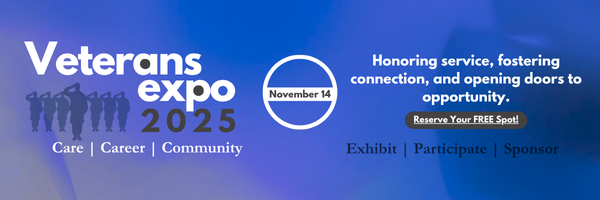When Trust Becomes Currency: What a $4M Alumni Ponzi Charge Teaches the World of Work
How a reported $4 million fraud tied to an alumni network reframes the responsibilities of institutions and professionals in the modern economy.
News that a Harvard Business School alumnus has been charged after allegedly using the school’s alumni network to defraud fellow graduates of roughly $4 million in a Ponzi scheme landed like a chill through corridors where reputation and relationships are the primary capital. For the work community—executives, recruiters, founders, and alumni relations teams—this is not merely a legal story. It is a mirror held up to the quiet economies that sustain careers: trust, reciprocity, and the institutional brands that translate into opportunity.
Alumni networks are engines of social capital. They convert shared credentials, narratives, and rituals into introductions, investments, jobs and goodwill. But when the currency of those networks is weaponized, the damage ripples beyond the ledger: it corrodes confidence in personal judgment, in the institutions that certify character, and in the informal systems that smooth professional life. This episode forces us to ask difficult questions about how networks are governed, how professionals evaluate risk when reputation stands in for due diligence, and how a community rebuilds after a breach.
Why an Alumni Network Is a Unique Vector for Fraud
There are three structural dynamics that make elite alumni networks effective—and vulnerable.
- Pre-established trust. Membership signals competence; shared rites of passage create rapid affinity. That pre-trust lowers thresholds for acceptance of proposals and reduces the instinct to verify.
- Information asymmetry. Professionals often trade on reputation and relationships rather than paperwork. High-trust interactions can substitute for formal contracts—until they cannot.
- Social amplification. Endorsements and referrals within a closed-knit community accelerate the spread of opportunities—and of fraud narratives. Each introduction is not just a connection, it’s an implicit seal of approval.
When those dynamics are harnessed to deceive, the financial loss is only the beginning. The psychological toll—shame, betrayal, and a reconfigured sense of who to trust—can be debilitating for victims and corrosive for institutions that pride themselves on ethical leadership.
Lessons for Professionals: How to Preserve Your Safety Without Sacrificing Community
It would be tempting to respond to headlines like this by pulling back from networks altogether. That would be a mistake. Networks remain one of the most powerful levers for career mobility and entrepreneurship. Instead, professionals should recalibrate how they transact within those networks.
- Adopt active skepticism, not cynicism. Treat introductions as invitations to verify, not as guarantees of legitimacy. Ask for documentation, ask for references outside the immediate circle, and check basic facts—track records, legal filings, and financial statements where appropriate.
- Split roles and responsibilities. Avoid situations where a single person controls capital flows, communications, and reporting. Segregation of duties is a staple of sound governance for a reason: it reduces fraud risk.
- Document interactions. Keep emails, term sheets, and notes. When relationships operate on trust, a paper trail becomes your best safeguard and the community’s best medicine for transparency.
- Diversify decision-making. A small committee or advisory group can catch red flags a single believer will miss. Diversity of background and perspective is not just morally right; it is pragmatic risk management.
What Alumni Organizations Owe Their Members
Institutions that host alumni communities—business schools, universities, and professional associations—occupy an awkward middle ground. They are neither guarantors of every individual’s behavior nor passive platforms. The credibility of such institutions is intertwined with how they respond to breaches.
Practical steps alumni organizations can and should take:
- Clear policies and communications. Define the boundaries of endorsement. Be explicit about what an alumni mention does—and does not—mean.
- Accessible reporting mechanisms. Create straightforward, well-publicized channels for members to report suspected fraud or misconduct, with clear timelines and protections for whistleblowers.
- Education and tools. Offer regular programming on financial literacy, fraud recognition, and governance best practices. Knowledge is a community’s first line of defense.
- Rapid, transparent action. When allegations arise, timely and proportional responses preserve institutional integrity. Silence amplifies suspicion; clarity restores it.
Rebuilding After a Breach: Accountability and Renewal
The path forward after a high-profile charge is neither punitive purge nor embarrassed amnesia. It’s a process of accountability paired with constructive reforms. That pathway should include:
- Restitution frameworks. Institutions and associations can work with legal authorities and member groups to facilitate information sharing that aids recovery when possible.
- Policy audits. Review and strengthen rules around fundraising, investment solicitations, and endorsement language. Tighten processes for members who solicit funds through alumni channels.
- Culture work. Recommit to norms of candor, challenge, and verification. Normalize the practice of asking uncomfortable questions as a mark of professionalism, not distrust.
Professionally, communities heal when they realign incentives so that protecting peers from harm is as valued as opening doors for opportunity.
A Broader Reflection on Reputation in the Age of Networks
We live in an era where reputation is portable and networks are amplifiers. That reality produces enormous value—and new vulnerabilities. This incident is not solely about one accused individual’s choices; it is a teachable moment about the systems we rely upon to certify character.
Organizations and professionals must accept that reputation alone cannot substitute for verification. Institutions should offer members both the social capital they prize and the guardrails that ensure that social capital is not weaponized.
Action Checklist for the Work Community
For busy leaders and networked professionals, here’s a concise checklist to translate these lessons into practice:
- When solicited through an alumni channel: ask for written terms and independent references.
- Insist on third-party audits or escrow arrangements for collective investments.
- Keep a written record of investment conversations and formal agreements.
- Encourage alumni organizations to publish clear policies on fundraising and endorsement.
- Support victims by sharing factual information and helping them access legal resources and community support.
Closing: Trust as a Practice, Not an Inheritance
Alumni networks are among the most potent engines of career mobility and innovation. They embody the promise that shared education and experience can be transformed into mutual uplift. But trust is not a one-time grant. It is a practice—cultivated through transparency, tested by accountability, and sustained by systems that prioritize protection and fairness.
When members of any professional community are harmed through alleged fraud, the question for the rest of us is not whether to withdraw our trust entirely but how to strengthen the institutions and habits that make trust a reliable currency. The work community can turn this unsettling episode into an opportunity: to embed better governance into the scaffolding of our networks, to treat skepticism as a professional virtue, and to reclaim the social capital that powers careers with renewed responsibility.




























